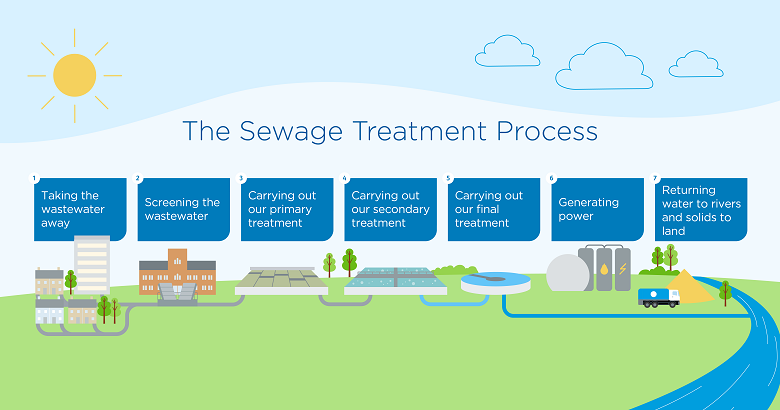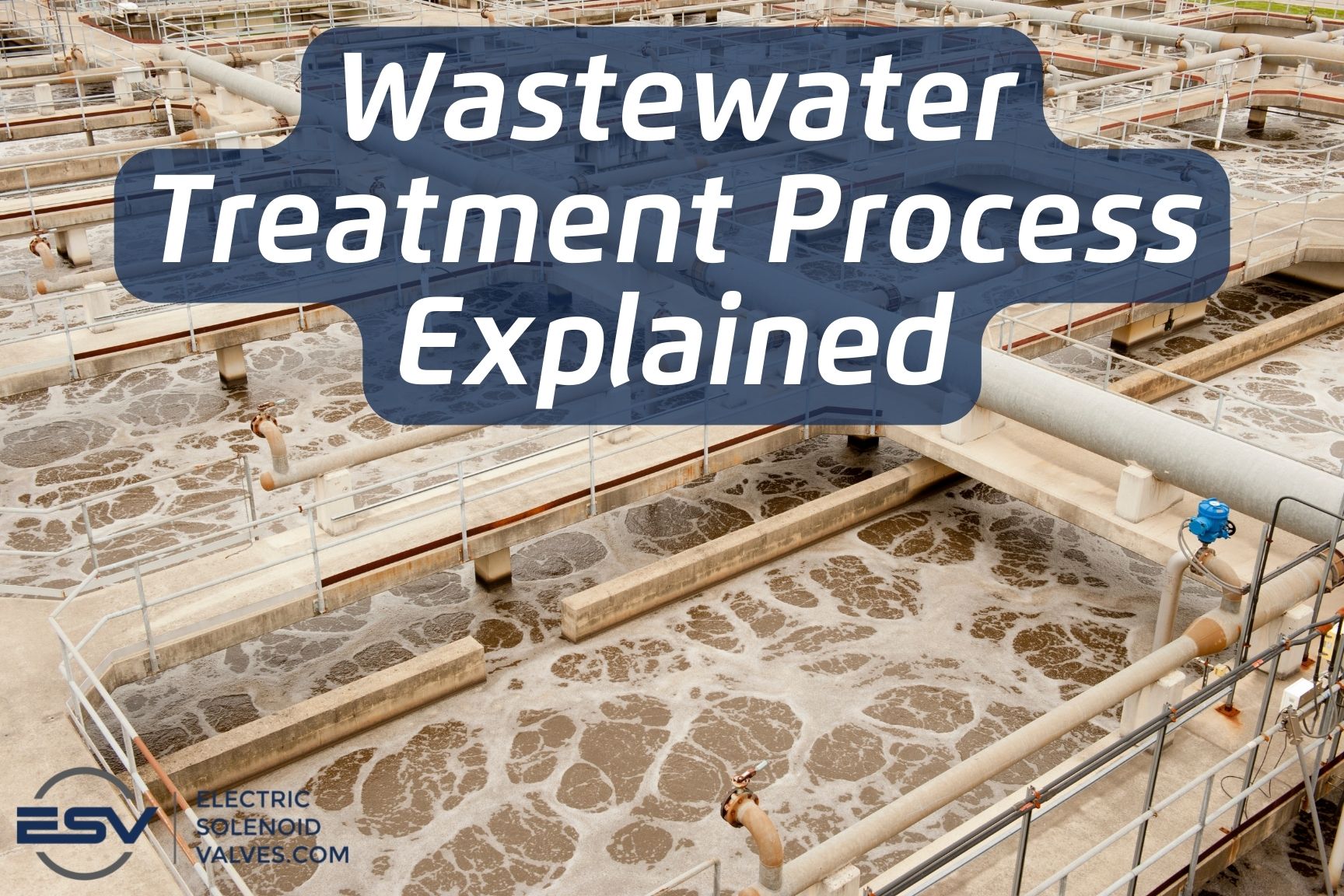Economical Solutions for Large-Scale Waste Water Treatment Facilities
Wiki Article
Optimizing Waste Water Therapy Procedures: Strategies for Improved Water Top Quality and Resource Recuperation
In the realm of wastewater therapy, the quest for enhancing performance and sustainability through procedure optimization is a recurring pursuit that holds tremendous significance. By focusing in on techniques customized to raise water top quality while simultaneously harnessing important sources, therapy plants can address pressing environmental worries while opening economic benefits. From sophisticated innovations to cutting-edge source healing methods, the landscape of wastewater treatment is advancing rapidly. As we explore the complexities of enhancing these procedures, a world of opportunities arises that assures not only cleaner water however likewise a much more lasting future.Importance of Process Optimization
Maximizing drainage therapy procedures via careful process optimization is vital for taking full advantage of effectiveness and guaranteeing environmental sustainability. By fine-tuning each step of the treatment procedure, from first intake to final discharge, water therapy centers can accomplish higher degrees of pollutant removal, reduce power intake, and reduce the generation of waste by-products. Process optimization involves analyzing key efficiency signs, such as hydraulic retention times, sludge retention times, and nutrient levels, to identify locations for renovation and carry out targeted remedies.Effective process optimization not only boosts the general performance of drainage therapy plants but also contributes to set you back savings and regulatory conformity. By enhancing procedures, operators can attain higher treatment capacities without the demand for considerable infrastructure financial investments. Additionally, boosted therapy performance leads to cleaner effluent discharge, minimizing the environmental effect on receiving water bodies and ecosystems.

Advanced Therapy Technologies
In the realm of drainage treatment, the application of innovative treatment innovations plays a crucial function in enhancing the general performance and effectiveness of the treatment procedures. These advanced innovations supply ingenious remedies to attend to complicated impurities present in wastewater streams, guaranteeing the elimination of contaminants to meet stringent water quality criteria. Advanced therapy processes such as membrane layer bioreactors, ozonation, advanced oxidation procedures, and reverse osmosis enable the detailed removal of contaminants, including arising toxins like pharmaceuticals and personal care products.Additionally, these technologies promote source healing by extracting valuable products such as phosphorus, nitrogen, and energy from the wastewater. Advanced nutrient removal innovations can recoup phosphorus and nitrogen for reuse in farming fertilizers, while energy recovery systems like anaerobic digestion can harness biogas for electrical power generation. By including sophisticated treatment innovations into wastewater treatment plants, drivers can boost water high quality, minimize environmental impact, and move in the direction of a much more resource-efficient and sustainable approach to wastewater monitoring.
Source Healing Techniques
Source recovery methods in wastewater therapy processes play an essential duty in optimizing the utilization of beneficial sources included within wastewater streams. One typical resource recuperation technique is the removal of nutrients like phosphorus and nitrogen from wastewater for reuse as plant foods or in industrial procedures.
Water healing strategies, such as membrane innovations and progressed filtration systems, enable the treatment and reuse of water for non-potable applications like watering or commercial procedures. By executing resource healing strategies in wastewater treatment plants, not only can important sources be saved and reused, but the general sustainability and performance of the therapy procedure can be substantially boosted. As the emphasis on source scarcity and environmental sustainability continues to grow, the significance of incorporating source healing strategies right into wastewater therapy processes becomes progressively evident.
Sustainable Practices in Wastewater Treatment
Lasting methods in wastewater treatment incorporate a variety of techniques aimed at lessening the environmental impact of therapy processes while optimizing resource recuperation. One crucial aspect of lasting wastewater treatment is the implementation of energy-efficient modern technologies to minimize the carbon footprint of therapy plants.Furthermore, the adoption of innovative treatment modern technologies that promote water reuse and recycling plays an important role in lasting wastewater management. By dealing with wastewater to a high standard, it can be repurposed for different non-potable applications, such as irrigation, commercial processes, and also potable water manufacturing in some cases. This not just conserves beneficial freshwater resources however additionally decreases the quantity of effluent discharged into the setting.

Instance Studies on Successful Optimization
As wastewater treatment facilities increasingly concentrate on sustainable methods, real-world study showcasing successful optimization strategies act as vital designs for sector advancement. One such study focuses on the implementation of advanced nutrient removal technologies in a municipal wastewater therapy plant. By including organic nutrient removal processes and optimizing operational parameters, the facility attained substantial decreases in nitrogen and phosphorus levels released right into getting waters, eventually improving overall water quality.An additional remarkable situation research study involves the assimilation of anaerobic food digestion systems in an industrial wastewater treatment plant to boost power healing and resource efficiency (Waste Water Treatment). Via the food digestion of organic waste products, the center not only generated biogas for energy manufacturing but also lowered the quantity of sludge requiring disposal. This twin benefit not just enhanced the plant's sustainability performance yet likewise resulted in price savings
These effective optimization methods demonstrate the possibility for wastewater therapy facilities to accomplish both environmental and financial find advantages through cutting-edge methods and reliable processes. By learning from these study, market professionals can better optimize their very own operations to improve water quality and source recovery.
see here now
Final Thought
Finally, enhancing drainage treatment processes with innovative innovations, source healing techniques, and lasting practices is important for improving water top quality and making best use of resource recovery. Waste Water Treatment. Study have demonstrated successful application of optimization approaches in various wastewater treatment facilities. By continuing to focus on procedure optimization, we can ensure effective and reliable therapy of wastewater, ultimately causing an extra eco pleasant and lasting approach to managing water resourcesBy fine-tuning each step of the treatment process, from initial intake to last discharge, water treatment facilities can achieve higher levels of contaminant removal, reduce energy consumption, and minimize the generation of waste by-products.In the world of waste water treatment, the application of sophisticated treatment innovations plays a critical function in enhancing the overall efficiency and effectiveness of the therapy procedures. By integrating advanced treatment modern technologies into wastewater treatment plants, drivers can enhance water high quality, decrease environmental influence, and relocate towards a much more resource-efficient and lasting method to wastewater administration.
By executing resource recovery strategies in wastewater therapy plants, not only can valuable sources be saved and reused, but the total sustainability and effectiveness of the treatment process can be significantly boosted. Lasting practices in wastewater therapy include a range of approaches intended at lessening the environmental find this impact of therapy processes while taking full advantage of resource recuperation.
Report this wiki page